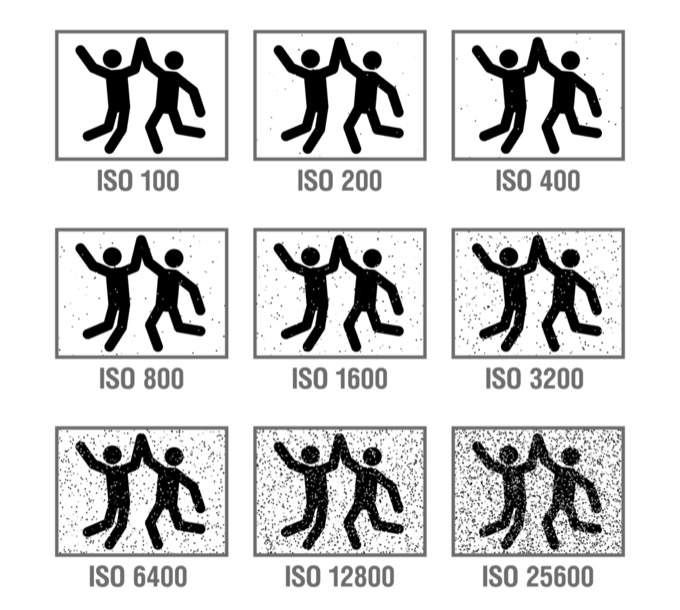Yes, there is an art to it
Learning to take good pictures of people is an important part of any photographer’s arsenal. Just like any other certain type of photo, there are camera settings that will suit portrait taking better than others.
You’ll always want to make sure you have the equipment you need for these types of photos as well. As far as lenses go, an 85mm will be your best bet in keeping more focus on the subject rather than the background. Also be sure you always have a tripod so that you don’t get blurry, messy images.

A camera that shoots in manual mode to allow you to change the settings is necessary, and you can follow this guide for the best settings to apply to your camera for portrait photos.
ISO
For most photography, you’ll want to keep your ISO as low as possible in order to get the best quality image. The more you raise the ISO, the grainier and noisier your pictures will be. This is why it’s important to shoot with a good light source, so that you can keep the ISO low. 100-400 is best.

However, if you’re finding it difficult to keep good lighting, it’s okay to raise it as much as you need to. You can always edit images to get rid of some graininess, but try your best to get good lighting when you can.
Aperture
For portrait photos, the aperture depends on what kind of effect and look you want to achieve. Most of the time, for portraits, a wider aperture from f/1.8 to f/4 will work well to blur out the background and keep your model in focus.

When using a wide aperture like this, you’ll need to be precise about where your focus is. For portraits, the best place to focus is on the eyes, as this is where we naturally look to first when we see pictures of people. A wide aperture may blur out even some of the subject, so be precise when you’re choosing which one to shoot in. If you’re struggling to focus in the right area, set the aperture to f/4.

For group portrait photos, you’ll want a smaller aperture so you can get everyone into focus. You won’t have to worry about getting focus exactly on one set of eyes, but have the aperture just wide enough so the background is more blurred.
Shutter Speed
Shutter speed is an important aspect to think about when taking any photo, and portraits are not an exception. For these types of photos it can vary depending on your subject. A faster shutter speed, such as 1/125 or more, is best for when you’re taking pictures of kids or groups.
You can do lower shutter speeds if you’re working with a single person who won’t move too much, or if you have a tripod. But in most cases, you’ll want to keep the speed rather fast in order to keep your images focused and sharp.

People tend to move a lot, especially their eyes, so getting the camera to keep up with it will help you capture less blurry outcomes. If there’s a reason you would want motion blur in your image, though, a slower shutter speed would be good to achieve this. Just make sure your camera is steady on a tripod so that you don’t blur out the entire image.
White Balance
This setting will depend on what kind of lighting situation you’re shooting under. Using one of your camera’s white balance presets will help you a lot in this case. Just find which one suits your conditions best or that you prefer the look of.
If you’re taking your photos outside, the Daylight or Cloudy settings will work well. For indoors, see how much natural lighting you can get and you can use similar settings. Or, you can create your own custom white balance settings which work well indoors where the lighting doesn’t change much from one place to another.

You won’t want to have just your auto white balance on because it will change the camera’s settings too much from photo to photo and you won’t be able to get a consistent look.
Focus
You can use automatic focus for portrait photos, but you’ll want to be sure you have single-point focus or manual AF point on in order to have your camera focus exactly where you want it. This will likely be just the face for portrait photos, so that’s why it’s important to have single-point on.
If you have multiple points set for the camera to focus to, it will usually not focus exactly where you want it to.

Also, you’ll want to have your camera set to single shot instead of continuous focus. Single shot will keep your focus in one area, while continuous will adjust the focus area depending on the movement of the subject. Most often for portraits, your subject won’t be doing much movement like walking or running, so you won’t need your camera to adjust the focus for that.
Single-Shooting
You may be tempted to use continuous shooting while taking portraits so you have lots of different photos to choose from when it comes time to weed out the ones you don’t like. However, when photographing people, all this does usually is capture a lot of unflattering movement, like closed eyes or split-second gestures.

The best route to take here is to use single-shooting. This way you can wait until your subject is in the perfect position and then shoot your photo. It will make for a lot less junk to sift through and many more photos you’ll actually want to keep.
So, when it comes to the best camera settings for portrait photography, the best advice is to take it slow and shoot only when you and your subject are ready.




